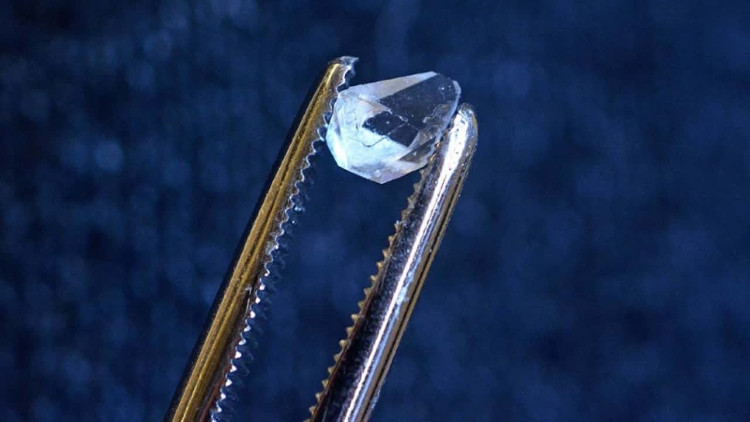Trace time crystals in ... children's toys
This mysterious stone not only exists in the laboratory, but can be right next to us.
These are anomalies when they violate the law of energy conservation, whereby energy cannot be produced or lost. Time crystals are extremely rare, only two samples were created in 2016 in the laboratory, but so far Yale University scientists have identified signs of its existence within the germs. Crystal, similar type is used in science projects for children.

Monoammonium phosphate crystals contain clues to a single time crystal.(Photo: Michael Marsland / Yale University).
For a long time, the theory of time crystals remained on paper until scientists could create a sample in the laboratory in 2016. Although they looked like ordinary crystals, the At the molecular level, when exposed to electromagnetic pulses, the atom in the crystal will oscillate and move in a new direction, citing the report of the Science Alert specialized page.
Time crystals can not exist in nature but have to be created, but new studies are published online in two specialized journal journals (Physical Review Letters and Physical Review B) that show this may change in the near future.
By definition, traditional crystals are an arrangement of atoms or molecules in a pattern that is repeated regularly in space, according to Space.com. Time crystals are the arrangement of atoms or molecules that form a pattern that is repeated regularly in time, vibrating or moving back and forth at a specified speed.
The time crystal atoms are not driven by stored energy but from the symmetry of broken time. Therefore, the intention to conserve energy is no longer applicable to them. In addition, before the time crystal was discovered, all symmetry found in nature was somehow broken except for the symmetry of static state.

Cyclic vibrations of crystal atoms do not consume time nor consume energy.(Graphic markdow.blogspot.com).
The researchers found signs of time crystals inside monoammonium phosphate (MAP) crystals - the chemical formula NH 4 H 2 PO 4 - developed. This quadrilateral crystal is often used in classroom science exercises, as well as home-grown crystal germination toys for children. In other words, MAP is a popular commercial commodity in the West. However, when researchers used nuclear resonance to analyze these common crystals, they found something unusual: a sign of an intermittent crystal - a strong clue about the existence of time crystals in MAP.
"When displayed, the measurements were quite impressive for us , " said Sean Barrett, Yale University physics professor. According to PhysOrgng, he is the main author of two newly published studies. "Our work shows that the sign of a time crystal can be determined, in theory, by observing the crystals that grow in children's toys , " he said.
In addition to a sign of intermittent crystal time, the team also tried using the 'feedback' method to make them reveal hidden links, also known as quantum hierarchies within the system . This is strong evidence for the existence of a time crystal.

Time crystals are not simply conceptual physics, when their practical applications are being studied.(Photo: Pan Andrii / Shutterstock).
According to Phys.org, these crystals can help improve atomic clocks, extremely accurate time-measuring devices via atomic vibrations; or gyroscope, the device helps determine the direction by using gravity; and magnetometer, magnetic field measuring device.
In fact, researchers are not quite sure about the future of time crystals.'The whole theory of time crystals has recently been developed, and everyone is trying to answer very basic questions about them,' Professor Barrett told Newsweek . 'It's not easy to predict their actual applications at this time.'
- Scientists discover crystals may also be bent
- Children with more toys will be healthier
- Why do German nursery schools say no to toys?
- Children's toys are better than electronic toys
- Few toys, kids easier to concentrate?
- Hazard warning with Chinese plastic beaded toys
- Choose toys that match your child's age
- Revealed 'adult toys' 2,000 years ago
- Chinese toys contain toxic substances that feminine boys
- Why do Lego toys have holes in their heads?
- Scientists have found a way to
- Finding toys in ancient times
 'Fine laughs' - Scary and painful torture in ancient times
'Fine laughs' - Scary and painful torture in ancient times The sequence of numbers 142857 of the Egyptian pyramids is known as the strangest number in the world - Why?
The sequence of numbers 142857 of the Egyptian pyramids is known as the strangest number in the world - Why? History of the iron
History of the iron What is alum?
What is alum?